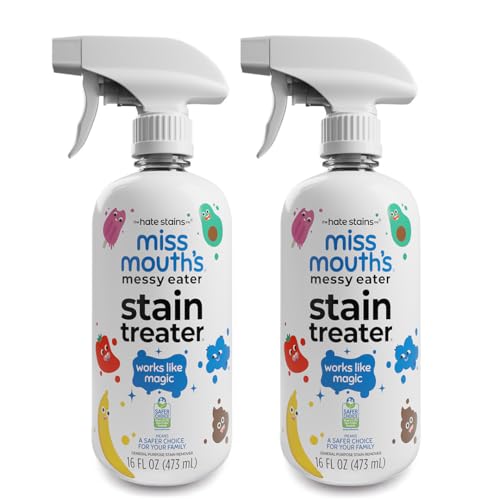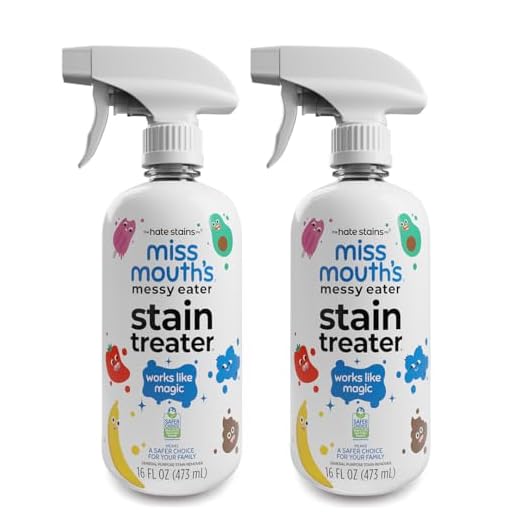

Act quickly when a dark liquid spills onto your garment. Blot the affected area gently with a clean, dry cloth or paper towel to absorb as much of the liquid as possible. Avoid rubbing, as this can spread the stain and push it deeper into the fibers.
Once you’ve blotted the spill, apply cold water to the stained region. Rinse the fabric from the back to the front, which helps to push the stain out rather than deeper in. If available, a specialized stain remover can be applied at this stage. Choose one that is safe for the type of material you’re treating.
After treating the spot, launder the item as per the care instructions. Check the stain prior to drying; heat can set any remaining discoloration. If necessary, repeat the treatment process until the stain is completely gone. Patience is key; sometimes multiple attempts are required for complete removal.
Stains from Dark Beverage on Fabrics
Immediate action is crucial. Blot the affected area gently with a clean cloth to absorb excess liquid. Avoid rubbing, as it can spread the stain.
Consider these methods:
- Salt: Sprinkle generously on the stain to absorb moisture. Let it sit for a few minutes, then brush off.
- Club Soda: Pour directly onto the stain. The carbonation can help lift the color from the fabric.
- White Vinegar and Dish Soap: Mix equal parts and apply to the stain. Let it sit for 30 minutes before rinsing with cold water.
- Stain Remover: Apply a commercial product designed for tough stains, following the manufacturer’s instructions.
After treatment, launder the fabric as per care instructions. Check the stain before drying; heat can set it permanently. If needed, repeat the chosen method until the mark is gone.
For delicate fabrics, consider professional cleaning to avoid damage. Always test any cleaning solution on a hidden area first.
Understanding the Staining Properties of Red Wine
To tackle the challenge of removing a stain caused by dark fermented grape juice, it’s essential to understand the chemistry behind the discoloration. The pigments responsible for the vivid hue are called anthocyanins, which are extracted from the skins of the grapes during fermentation. These compounds bond with fibers in textiles, making them particularly difficult to eliminate once they have settled.
When addressing a fresh stain, act quickly. Blot the area gently with a clean cloth to absorb excess liquid without rubbing, which can spread the stain further. Using cold water can help dilute the pigments before applying any cleaning solution. For effective removal, consider a mixture of dish soap and hydrogen peroxide, which can break down the pigments without damaging the fabric. Always test any cleaning agent on a hidden area first to avoid discoloration.
For older stains, enzymatic cleaners are highly beneficial. These products contain enzymes that target organic compounds, effectively breaking down the pigments’ structure. Allow the cleaner to sit on the fabric according to the manufacturer’s instructions for optimal results.
In cases where the stain persists, professional cleaning services can offer specialized treatments that are more powerful than household methods. They have access to industrial solutions and equipment that can significantly increase the chances of complete removal.
Understanding these aspects of stain removal can empower you to tackle unexpected mishaps with confidence. Always remember, prompt action and the right cleaning agents are key to salvaging your favorite garments.
Immediate Actions to Take After a Spill
Act quickly. Blot the affected area with a clean, dry cloth or paper towel to absorb excess liquid. Avoid rubbing, as this can push the stain deeper into the fibers.
Steps to Follow
- Use cold water to rinse the stain from the backside. This helps to push the liquid out of the fabric.
- Prepare a solution with equal parts of white vinegar and water. Apply it gently to the stained area using a clean cloth.
- Sprinkle salt or baking soda on the damp spot to absorb remaining moisture and color.
- After a few minutes, blot the area again with a fresh cloth to lift the stain.
- Rinse thoroughly with cold water once the stain lightens.
Additional Tips
- Test any cleaning solution on an inconspicuous area first to ensure it won’t damage the fabric.
- If the stain persists, consider using a specialized stain remover designed for your fabric type.
- Avoid heat until the stain is completely removed, as heat can set the stain permanently.
Choosing the Right Cleaning Solutions for Fabrics
For effective treatment of stains, select cleaning agents that specifically target the type of fabric involved. For delicate materials, opt for gentle solutions, such as mild dish soap mixed with water, while for sturdier fabrics, consider enzyme-based stain removers that break down organic compounds.
Always conduct a patch test on an inconspicuous area to ensure colorfastness and prevent damage. When dealing with stubborn marks, avoid using bleach unless it is safe for the fabric, as it can cause discoloration.
Commercial products designed for wine stains often contain a blend of ingredients that lift pigments without harming fibers. Look for options that include sodium bicarbonate, which can neutralize acidity, or white vinegar for its natural cleansing properties.
For those seeking alternative methods, natural solutions such as club soda or hydrogen peroxide can also be effective. Apply these gently, blotting rather than rubbing, to lift the stain while preserving the fabric’s integrity.
After successful treatment, laundering according to the fabric care instructions can help remove any residual cleaning solution. Additionally, if you’re interested in maintaining a balanced lifestyle, check out this guide on how to cook a balanced diet for dogs.
Home Remedies for Stains from Dark Beverage
For immediate treatment, sprinkle salt directly onto the affected area. This absorbs excess liquid and aids in lifting the color. After a few minutes, gently blot the spot with a clean cloth to remove the salt and moisture.
Another effective solution involves using club soda. Pour a small amount onto the stain, allowing the carbonation to break down the pigments. Gently blot with a cloth until the mark starts to fade.
Baking Soda Paste
Create a paste by mixing baking soda with water. Apply this mixture to the stained area and let it sit for about 30 minutes. Rinse thoroughly with cold water afterward. This method not only helps to lighten the discoloration but also neutralizes any lingering odors.
Hydrogen Peroxide and Dish Soap
Combine equal parts hydrogen peroxide and dish soap. Apply this mixture to the stain and let it sit for about 30 minutes. Rinse with cold water. This combination effectively breaks down the pigments while also cleaning the fabric.
When to Seek Professional Cleaning Services
Engaging a cleaning expert becomes necessary if stains persist despite home treatments. Professionals possess specialized techniques and products to tackle challenging marks effectively.
If the fabric is delicate or irreplaceable, such as silk or vintage textiles, immediate contact with a cleaning service is advisable. Attempting at-home remedies may cause irreversible damage.
Stains that have set for an extended period require advanced treatments that only professionals can provide. Their knowledge of varying materials ensures the best approach to restoration without compromising the integrity of the fabric.
For large spills or multiple items affected, a service can streamline the cleaning process and guarantee thorough results. They can also handle specialized items like upholstery or carpets where household methods may fall short.
| Situation | Recommended Action |
|---|---|
| Persistent Stains | Contact a professional |
| Delicate Fabrics | Seek expert help immediately |
| Set Stains | Use professional cleaning services |
| Large or Multiple Spills | Engage a cleaning service |
| Specialized Items | Consult with professionals |
Ultimately, when in doubt, reaching out to a cleaning service is the best course of action. Their expertise can save time and ensure a favorable outcome for your treasured pieces.
Preventive Measures to Avoid Stains
To significantly reduce the chance of unwanted marks, consider wearing protective clothing when indulging in beverages. Opt for darker shades or patterned fabrics that can camouflage any potential mishaps.
Utilize tablecloths or placemats as barriers when serving drinks. This simple step can absorb spills before they reach your garments.
Strategic Drinking Techniques
When enjoying a glass, hold it by the stem or base to minimize contact with your attire. Take small sips and avoid overfilling your glass to limit the risk of accidental spills.
Immediate Availability of Cleaning Supplies
Keep stain-removal products nearby during gatherings. Quick access to absorbent materials, like paper towels or cloths, can make a significant difference in addressing any incidents before they set.
Testing Fabric Types for Stain Resistance
Conducting tests on various materials can significantly inform choices regarding stain resistance. Start with cotton, a commonly used fabric, which tends to absorb liquids quickly, making it less favorable for resisting spills. On the other hand, polyester exhibits a higher level of resistance due to its synthetic fibers, allowing it to repel some liquids effectively.
Natural vs. Synthetic Fabrics
Natural fibers, like linen and wool, show varied results. Linen can resist stains better than cotton but is still prone to absorbing marks if not treated promptly. Wool, while more stain-resistant, can be affected by certain tannins found in beverages. Synthetic blends, particularly those mixed with cotton and polyester, often provide the best of both worlds, combining comfort with enhanced durability.
Testing Methodology
To evaluate these fabrics, apply a small amount of liquid onto each type and observe the absorption rate over a short period. Fabrics that demonstrate slower absorption and easier cleanup are preferable for maintaining a pristine appearance. Additionally, consider pre-treating materials with protective sprays designed for fabrics, which can enhance resistance against stains.
Ultimately, understanding each fabric’s behavior in the face of spills allows for more informed decisions when selecting items that will be less susceptible to pesky marks. Keep testing different options to find the best match for your needs.








